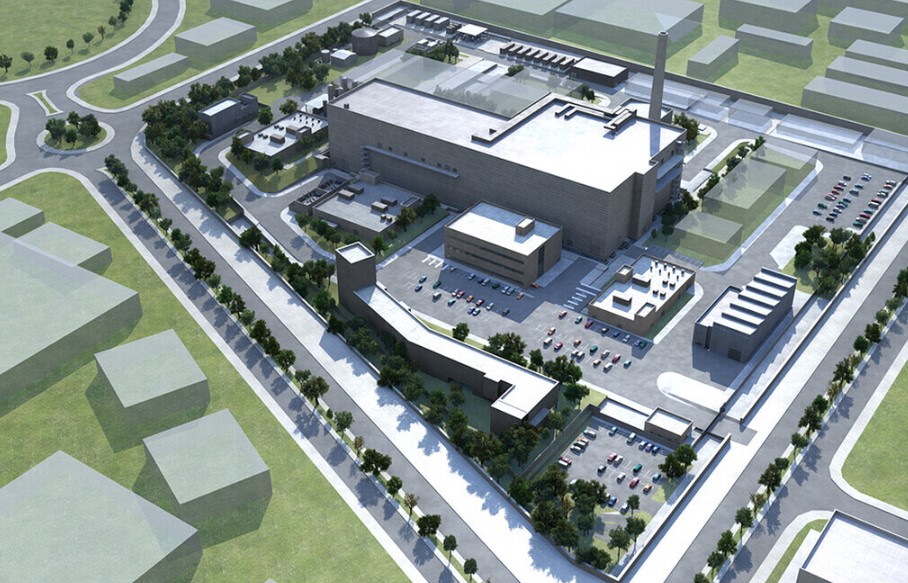Yesterday was a crucial day for IFMIF-DONES (International Fusion Materials Irradiation Facility DEMO-Oriented Neutron Source). This major scientific project is closely linked to ITER (International Thermonuclear Experimental Reactor), the experimental nuclear fusion reactor being built by a European-led international consortium in Cadarache, France. IFMIF-DONES is located in Escúzar, a town in the province of Granada.
Construction work on this final facility began in mid-September 2022, but today is a particularly important day for Granada and all of Spain. The Council of Ministers today approved an investment of almost €200 million required to begin construction on IFMIF-DONES’s linear particle accelerator. This machine represents the heart of this scientific facility and will put Spain on the nuclear fusion map.
The development of the linear particle accelerator will cost approximately €450 million, with the Junta de Andalucía contributing half of this amount. However, this is only the cost of the accelerator; the entire IFMIF-DONES project will cost approximately €700 million, with Spain contributing half of this capital. An additional €50 million will be added for implementation. In addition, the operating costs of this state-of-the-art research center will be approximately €60 million annually, of which Spain will cover 10%. Although this sounds like a considerable sum, the project’s leaders are convinced that the economic and scientific benefits of IFMIF-DONES will far outweigh the costs.
What is IFMIF-DONES and why is it crucial for the future of nuclear fusion? IFMIF-DONES is one of the three pillars of the nuclear fusion program, in whose development the European Union is involved. The other two pillars are ITER and DEMO. The experimental nuclear fusion reactor currently under construction at Cadarache is intended to demonstrate that nuclear fusion works on a scale that humanity can manage and that it is also energetically viable.
However, ITER itself does not pursue the goal of generating electricity. This task will be taken over by DEMO (DEMOnstration Power Plant), a facility that will take on the technological advances of ITER and develop them further to establish itself as a true precursor to commercial nuclear fusion reactors. However, without IFMIF-DONES, there will be no DEMO, which is why Granada is currently the focus.
The fusion of a deuterium nucleus and a tritium nucleus results in the production of a helium nucleus and a neutron, which is emitted with an energy of approximately 14 MeV (megaelectronvolts).
To fully understand the role of the IFMIF-DONES project, it is important to provide a brief overview of the fundamentals of nuclear fusion. One of the biggest challenges for engineers working on optimizing magnetic confinement nuclear fusion reactors like ITER is creating the conditions in the vacuum chamber of these sophisticated machines necessary for the fusion of deuterium and tritium nuclei.
But that’s not all. In this reaction, the fusion of a deuterium nucleus and a tritium nucleus produces a helium nucleus and a neutron, which is released with an energy of about 14 MeV. The problem is that the neutron lacks a net electrical charge, making it impossible to contain the magnetic field that retains the positively charged deuterium and tritium nuclei.
Therefore, the neutron produced as a result of the nuclear fusion reaction is hurled against the walls of the vacuum chamber with enormous energy. This particle is of great importance because it is closely linked to the generation of electrical energy in nuclear fusion reactors, but it also represents an aggressive form of radiation that can cause significant damage to the materials used in the reactor.
The components most affected by the direct impact of high-energy neutrons and the intense heat flow are the inner walls of the vacuum chamber and the ceiling surrounding them, whose purpose is to regenerate the tritium needed as fuel for the nuclear fusion reaction. Therefore, it is crucial to develop new materials capable of withstanding the neutron flux and thus ensure a long reactor lifetime.
The IFMIF-DONES linear particle accelerator will produce high-energy neutrons with the intensity and radiation volume necessary to test the candidate materials.
This is the main goal of IFMIF-DONES. To achieve this, it is necessary to develop facilities that allow the technicians involved in the project to understand the characteristics of the IFMIF-DONES to evaluate candidate materials that can be used not only in DEMO but also in future commercial nuclear fusion reactors.
The mission of this project clarifies what is at the heart of IFMIF-DONES: a source capable of generating high-energy neutrons with the intensity and volume of radiation necessary to test the candidate materials. This neutron source will be a linear particle accelerator that will help IFMIF-DONES scientists test, validate, and qualify the materials that will be used in the near future to generate electrical energy through fusion.




